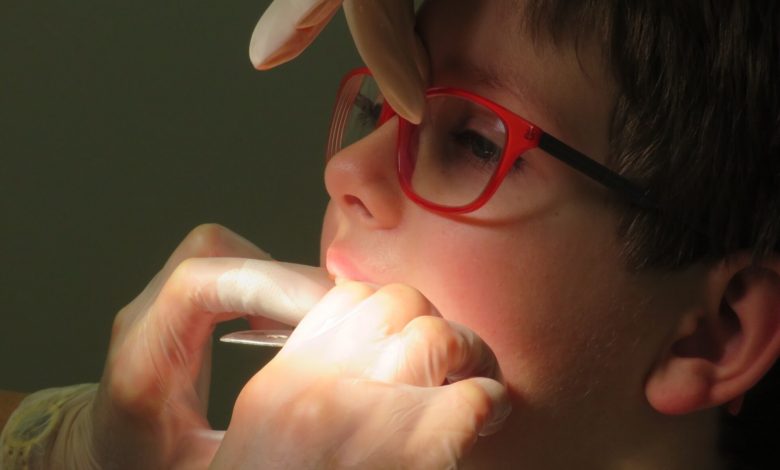Orthodontics in Children: Everything You Need to Know

It’s a good idea to tackle bite problems at an early age because bones are still growing during this period. Therefore, orthodontics will be more effective and faster in children. Keep reading to find out more!
When is orthodontics necessary in children?
There are many reasons why orthodontics is necessary for children. At this age, we have the advantage that the bones are still growing and the teeth are adapting.
This allows devices to be used to resolve many malocclusion situations such as:
- Ogival or narrow palate: The palate is narrower and has a domed area in the middle.
- Class II or retrognathia: The upper jaw is too advanced relative to the lower jaw.
- Class III or prognathism: Jaw too advanced.
- Open bite: When closing the mouth, the upper and lower teeth do not come into contact.
- Crossbite: The lower teeth are located outside the upper teeth at the time of biting.
- Tooth malpositions: Teeth are cramped or crooked, outside the dental arch.
The dentist diagnoses malocclusion after an oral examination and supplementary studies. In any case, there are some signs that parents can observe that suggest a child’s need for orthodontics:
- Early loss of baby teeth.
- Dysfunctional habits: Thumb sucking, nail biting, bottle or pacifier use, mouth breathing, atypical swallowing after 2 years of age.
- Difficulty pronouncing some phonemes.
- Crowded, gaping, crooked teeth or an uneven surface.
- Pain, noise, or problems with biting or eating.
To discover these noteworthy conditions, it is important to observe the eruption of teeth and the way children chew, swallow and speak. In this way, you will notice your dentist as soon as possible, and you will support them to find the problems if any.

When should the child’s first visit to the dentist be?
The first visit to the pediatric dentist should be before the child’s first birthday. Early and regular visits every six months allow the physician to detect irregularities.
In addition to examining the mouth and monitoring the growth of the child’s bones and teeth, the dentist advises parents on the care of the oral cavity. If any disease or disorder is detected, they will administer the appropriate treatment. And if there is an unresolved bite problem, the dentist will refer the child to an orthodontist.
When tooth replacement begins between the ages of 6 and 7, it is best to consult an orthodontist for analysis of your child’s occlusion. The professional will thoroughly examine the teeth, mouth, and bite pattern.
In addition, it may be necessary to take x-rays or photographs or take oral measurements to model the teeth and examine the case. The orthodontist may ask about the child’s eating and speaking habits, habits, and biting problems.
Bringing your child for an early consultation does not mean that orthodontics should be used immediately. Having an early diagnosis allows the professional to choose the best alternative as well as the ideal time to use it.
Using orthodontics in children allows us to reposition teeth and shape growing bones more easily than in an adult. It also prevents the change from continuing and complicating the whole situation.
Types and options of orthodontics in children
Orthodontic treatment corrects occlusion and alignment problems by applying constant pressure to specific areas of bones or teeth. This allows the bone tissue to grow in a certain direction or the teeth to move into the correct position.
There are different orthodontic options for children. Device selection depends on the needs of the clinical case and the age of the patient.
Functional devices
This type of orthodontics in children is useful during temporary or mixed dentition, where there are deciduous teeth and permanent teeth in the mouth. They are removable apparatus designed according to the position of the muscles responsible for moving the jaw.
The direction and intensity of muscle forces are directed, which over time translates into structural changes in the mouth. Because it is the muscles that move the teeth and even replace the bone that supports the teeth.
Preventive orthodontics
These are treatments with removable devices that orthodontists use in childhood when the skeleton is still in its developmental stage. In children, this type of orthodontics stops abnormal bone growth and guides the correct development of the maxillofacial structure.
It uses removable apparatus that the patient can put on and take off by himself for eating and hygiene. However, the more you use it, the better the results.
In general, they consist of acrylic plates with other attachments such as arches, springs, or screws. In this way, the device applies active mechanical force to structures that need modification, either to drive bone growth and expand bone or to produce certain tooth movements.
This category also includes masks for external use that are useful, for example, in the treatment of class III malocclusions. The child uses them at night while sleeping.
Fixed devices
Fixed orthodontics in children consists of placing braces attached to the tooth surfaces with a metal arch. As the name suggests, braces are attached to the teeth and the patient cannot remove them.
This orthodontic system for children can move each tooth individually in the desired direction. During adolescence; that is, it is placed in the mouth when the tooth replacement is completed but the bone is still growing.
Sometimes, it is necessary to complete the treatment with tooth extraction, especially if there is a lack of space to rearrange the teeth. This approach is effective in cases of diastemas, crowding, rotated teeth, and other dental defects.
Although we associate fixed orthodontics with the classical use of braces and metal wires, there are actually many variations that can make patients feel comfortable with braces. There are ceramic brackets, sapphire brackets, or even more aesthetic options that use the type that attaches to the inside of the teeth to keep them out of sight.
The elastics of the strings come in a variety of colors so that the child can change and combine them as they please.
Invisalign type invisible orthodontics
This orthodontic option for children uses clear aligners that the patient can insert and remove on their own. The action of these appliances is similar to braces but may be more comfortable and easier to use.
The dentist prepares a set of special clear plastic plates for the mouth. These are changed periodically to exert the necessary forces sufficient to move the teeth.
The patient should remove them while eating, for cleaning, and for sterilizing the mouth. However, they must be worn for at least 22 hours a day, most of the day, for the treatment to be effective.
Care and recommendations for braces
The use of orthodontics in children means paying attention to many details that will make treatment successful and keep the rest of the mouth healthy. The following are some of the precautions that parents should consider when using orthodontic appliances with their children.
Dental hygiene
It is important to pay special attention to oral hygiene. These apparatus support the accumulation of bacterial plaque, increasing the risk of developing problems such as caries and gingivitis.
Tooth brushing should be done every day, after every meal, taking care to clean all tooth surfaces. This should include a soft-bristled toothbrush and fluoride toothpaste. In addition, the child should floss once a day and use mouthwash if the dentist recommends it.
Patients using removable appliances should remove them to sterilize and brush their teeth as usual. Transparent plates should be cleaned once a week with effervescent tablets to remove foreign matter.
Cleaning is more difficult in children who wear braces, but they need to take the time to get it right. The use of special orthodontic brushes, whether interdental or electric, can be of great help to accomplish this task and access all areas. Oral irrigators are also very helpful.
Not to disrupt the controls
It is very important to go to scheduled appointments with the dentist and follow their instructions. The dentist will monitor and readjust treatment to move forward. It is very important to consult an expert when there is a concern, accident, or breakage with the devices.
Removable apparatus and elastic bands should be worn as recommended and care should be taken not to lose them. The holding time, in which special apparatuses are placed in the mouth, must be observed to hold the teeth in place. This prevents the teeth from returning to their original position.
How long will they be needed?
The duration of orthodontic treatments in children varies according to the problem to be solved and the apparatus used. In general, the duration of use varies between 18 and 36 months, depending on the cooperation of the patient.
During treatment, the child should regularly visit his orthodontist once a month. During these checks, adjustments are made and progress is monitored.
Orthodontics in children helps prevent future complications
Performing orthodontic treatment in children helps to solve existing problems in the child’s mouth. Treatment options will allow them to bite, eat, and talk normally, and even their smile will look prettier.
However, it is important to remember that acting early prevents many problems in the future. Because treatments in childhood are faster, more comfortable, more effective, and cheaper. Solving biting disorders in childhood helps children have a healthy mouth in adulthood.





